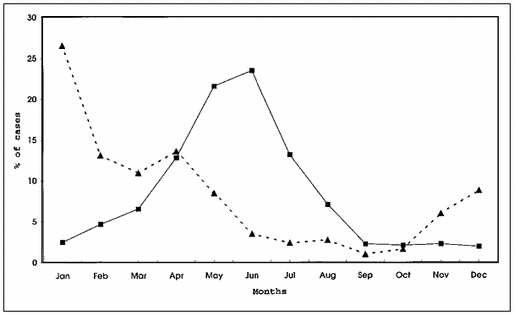Biological Warfare

Percentage of cases vs. Months
Q fever has been described as a possible biological weapon.
The United States investigated Q fever as a potential biologic warfare agent in the 1950s with eventual standardization as agent OU. At Fort Detrick and Dugway Proving Ground human trials were conducted on Whitecoat volunteers to determine the median infective dose (18 MICLD50/person i.h.) and course of infection. As a standardized biological it was manufactured in large quantities at Pine Bluff Arsenal, with 5,098 gallons in the arsenal in bulk at the time of demilitarization in 1970.
Q fever is a category "B" agent. It can be contagious and is very stable in aerosols in a wide range of temperatures. Q fever microorganisms may survive on surfaces up to 60 days.
It is considered a good agent in part due to the fact that it's ID50 (number of bacilli needed to infect 50% of individuals) is considered to be 1, making it the lowest known to man.
The United States investigated Q fever as a potential biologic warfare agent in the 1950s with eventual standardization as agent OU. At Fort Detrick and Dugway Proving Ground human trials were conducted on Whitecoat volunteers to determine the median infective dose (18 MICLD50/person i.h.) and course of infection. As a standardized biological it was manufactured in large quantities at Pine Bluff Arsenal, with 5,098 gallons in the arsenal in bulk at the time of demilitarization in 1970.
Q fever is a category "B" agent. It can be contagious and is very stable in aerosols in a wide range of temperatures. Q fever microorganisms may survive on surfaces up to 60 days.
It is considered a good agent in part due to the fact that it's ID50 (number of bacilli needed to infect 50% of individuals) is considered to be 1, making it the lowest known to man.
